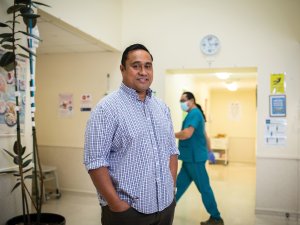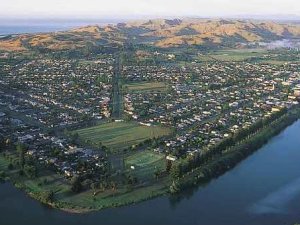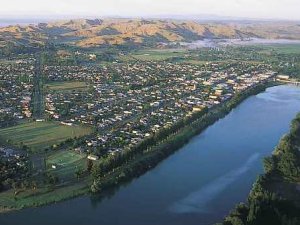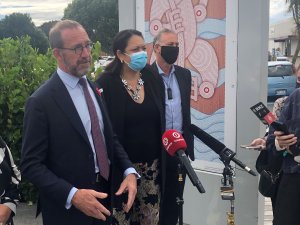Respiratory physician Lutz Beckert considers chronic obstructive pulmonary disease management, including the prevention of COPD, the importance of smoking cessation and pulmonary rehabilitation, and the lifesaving potential of addressing treatable traits. He also discusses the logic of inhaler therapy, moving from single therapy to dual and triple therapy when indicated, as well as other aspects of management
FIX: ‘Default’ option may be used if localities not created by 2024 deadline
FIX: ‘Default’ option may be used if localities not created by 2024 deadline
![Hourglass [Towfiqu Barbhuiya on Unsplash]](/sites/default/files/styles/cropped_image_16_7_/public/2022-09/towfiqu-barbhuiya-Cv1IZqKJQzU-unsplash.jpg?itok=uWdb_hQT)
In which we provide a short fix of reform news as we find it, to keep everyone in the loop
A “default” approach may be used if communities are unable to form a locality before the 2024 deadline.
A possible back-up option to forming a locality was mentioned by Te Whatu Ora chief executive Fepulea’i Margie Apa at the Collaborative Aotearoa Symposium 22 held at the start of this month in Wellington.
She was responding to comments by collaborative chief executive Amarjit Maxwell that has an arm, Collective Action with Communities, to help communities create localities to localise primary and community-based heathcare.
Ms Maxwell told Ms Apa she was “hugely optimistic” about localities as a cornerstone of the health reforms but said it would also be a “huge challenge” to meet the 2024 deadline.
Ms Apa responded that what had been learnt to date from the locality prototypes that while there is “really good energy” between communities, practices, providers and iwi Māori partnership boards that building and “holding those relationships together does take time”.
She said that depending on how locality geographic boundaries fall that it was “likely to offer a default approach”.
“That’s just so that we don’t have communities missing out. But certainly they can be shaped by providers and communities and iwi Maori partnership boards as we go.”
Ms Apa also said that as Te Whatu Ora got to building regional and local leadership teams it would need to “colloborate very closely” with the networks and PHOs already working and providing services in regions and locality areas.
Te Aka Whai Ora chief executive Riana Manuel also attended the symposium and noted that iwi Māori partnership boards would be pivotal in the locality establishment process and locality plans going forward.
“It’s around acknowledging how we warm up those Treaty partnerships and focus on equity as we move these new systems out and create these new networks.”
The former chief executive of Te Korowai Hauora o Hauraki and Hauraki PHO says she believes people have aspired for a long time to work in a locality type model. She told the symposium good feedback, good collaboration and great partnerships would make a locality process successful along with being prepared to “pivot” if needed.
“Of course we all want success because ultimately what we’re trying to strive for is better access for the people in our communities particularly those who don’t currently have it.”
The aim of the reforms is to have localities established by July 2024 and for all to have locality plans by the following year.
Nine prototypes were announced earlier this year and three more are expected soon. It is expected that there will be 60-80 localities.
The nine prototypes are:
- Ōtara/ Papatoetoe
- Hauraki
- Taupō/ Tūrangi
- Wairoa
- Whanganui
- Porirua
- West Coast
- Eastern Bay of Plenty
- Horowhenua
We're publishing this article as a FREE READ so it is FREE to read and EASY to share more widely. Please support us and the hard work of our journalists by clicking here and subscribing to our publication and website









![Barbara Fountain, editor of New Zealand Doctor Rata Aotearoa, and Paul Hutchison, GP and senior medical clinician at Tāmaki Health [Image: Simon Maude]](/sites/default/files/styles/thumbnail_cropped_100/public/2025-03/Barbara%20Fountain%2C%20editor%20of%20New%20Zealand%20Doctor%20Rata%20Aotearoa%2C%20and%20Paul%20Hutchison%2C%20GP%20and%20senior%20medical%20clinician%20at%20T%C4%81maki%20Health%20CR%20Simon%20Maude.jpg?itok=-HbQ1EYA)
![Lori Peters, NP and advanced health improvement practitioner at Mahitahi Hauora, and Jasper Nacilla, NP at The Terrace Medical Centre in Wellington [Image: Simon Maude]](/sites/default/files/styles/thumbnail_cropped_100/public/2025-03/2.%20Lori%20Peters%2C%20NP%20and%20advanced%20HIP%20at%20Mahitahi%20Hauora%2C%20and%20Jasper%20Nacilla%2C%20NP%20at%20The%20Terrace%20Medical%20Centre%20in%20Wellington%20CR%20Simon%20Maude.jpg?itok=sUfbsSF1)
![Ministry of Social Development health and disability coordinator Liz Williams, regional health advisors Mary Mojel and Larah Takarangi, and health and disability coordinators Rebecca Staunton and Myint Than Htut [Image: Simon Maude]](/sites/default/files/styles/thumbnail_cropped_100/public/2025-03/3.%20Ministry%20of%20Social%20Development%27s%20Liz%20Williams%2C%20Mary%20Mojel%2C%20Larah%20Takarangi%2C%20Rebecca%20Staunton%20and%20Myint%20Than%20Htut%20CR%20Simon%20Maude.jpg?itok=9ceOujzC)
![Locum GP Helen Fisher, with Te Kuiti Medical Centre NP Bridget Woodney [Image: Simon Maude]](/sites/default/files/styles/thumbnail_cropped_100/public/2025-03/4.%20Locum%20GP%20Helen%20Fisher%2C%20with%20Te%20Kuiti%20Medical%20Centre%20NP%20Bridget%20Woodney%20CR%20Simon%20Maude.jpg?itok=TJeODetm)
![Ruby Faulkner, GPEP2, with David Small, GPEP3 from The Doctors Greenmeadows in Napier [Image: Simon Maude]](/sites/default/files/styles/thumbnail_cropped_100/public/2025-03/5.%20Ruby%20Faulkner%2C%20GPEP2%2C%20with%20David%20Small%2C%20GPEP3%20from%20The%20Doctors%20Greenmeadows%20in%20Napier%20CR%20Simon%20Maude.jpg?itok=B0u4wsIs)
![Rochelle Langton and Libby Thomas, marketing advisors at the Medical Protection Society [Image: Simon Maude]](/sites/default/files/styles/thumbnail_cropped_100/public/2025-03/6.%20Rochelle%20Langton%20and%20Libby%20Thomas%2C%20marketing%20advisors%20at%20the%20Medical%20Protection%20Society%20CR%20Simon%20Maude.jpg?itok=r52_Cf74)
![Specialist GP Lucy Gibberd, medical advisor at MPS, and Zara Bolam, urgent-care specialist at The Nest Health Centre in Inglewood [Image: Simon Maude]](/sites/default/files/styles/thumbnail_cropped_100/public/2025-03/7.%20Specialist%20GP%20Lucy%20Gibberd%2C%20medical%20advisor%20at%20MPS%2C%20and%20Zara%20Bolam%2C%20urgent-care%20specialist%20at%20The%20Nest%20Health%20Centre%20in%20Inglewood%20CR%20Simon%20Maude.jpg?itok=z8eVoBU3)
![Olivia Blackmore and Trudee Sharp, NPs at Gore Health Centre, and Gaylene Hastie, NP at Queenstown Medical Centre [Image: Simon Maude]](/sites/default/files/styles/thumbnail_cropped_100/public/2025-03/8.%20Olivia%20Blackmore%20and%20Trudee%20Sharp%2C%20NPs%20at%20Gore%20Health%20Centre%2C%20and%20Gaylene%20Hastie%2C%20NP%20at%20Queenstown%20Medical%20Centre%20CR%20Simon%20Maude.jpg?itok=Z6u9d0XH)
![Mary Toloa, specialist GP at Porirua and Union Community Health Service in Wellington, Mara Coler, clinical pharmacist at Tū Ora Compass Health, and Bhavna Mistry, specialist GP at Porirua and Union Community Health Service [Image: Simon Maude]](/sites/default/files/styles/thumbnail_cropped_100/public/2025-03/9.%20Mary%20Toloa%2C%20Porirua%20and%20Union%20Community%20Health%20Service%20in%20Wellington%2C%20Mara%20Coler%2C%20T%C5%AB%20Ora%20Compass%20Health%2C%20and%20Bhavna%20Mistry%2C%20PUCHS%20CR%20Simon%20Maude.jpg?itok=kpChr0cc)